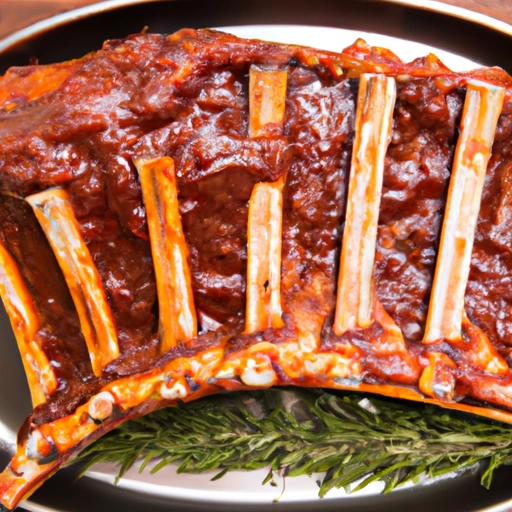Rib
Description

Ribs are a type of meat cut that come from the ribcage of animals such as cattle, pigs, and lambs. In culinary terms, ribs are highly prized for their rich flavor, tender texture, and the way they respond to various cooking methods. Ribs can come in several forms, including individual ribs, rib racks, or riblets, and each has its unique attributes and uses in the kitchen.
Common uses
Ribs are commonly used in barbecue, slow-cooked stews, soups, oven roasts, and as a flavorful addition to beans and rice dishes. They are also often marinated or dry-rubbed with a blend of spices to enhance their flavor before cooking.
Nutritional value
Calories
Typically, pork ribs contain about 277 calories per 100 grams (3.5 ounces), while beef ribs contain approximately 291 calories per 100 grams.
Protein
Pork ribs offer about 24 grams of protein per 100 grams, and beef ribs provide around 26 grams of protein per 100 grams.
Fat
Pork ribs contain roughly 20.8 grams of fat per 100 grams, while beef ribs have about 24 grams of fat per 100 grams.
Carbohydrates
Ribs are low in carbohydrates, with most of the calories coming from protein and fat.
Vitamins
Ribs are a good source of B vitamins, particularly vitamin B12, which is vital for red blood cell formation and neurological function.
Minerals
They also provide important minerals such as zinc, selenium, phosphorus, and in some cases, a significant amount of iron.
Health benefits
The protein content in ribs contributes to muscle maintenance and repair. The B vitamins present are essential for various metabolic processes, and the minerals support immune function and bone health.
Potential risks
High in saturated fats and cholesterol, ribs should be consumed in moderation to reduce the risk of heart disease. Additionally, some cooking methods, like grilling at high temperatures, can produce harmful compounds.
Common recipes
Ribs are versatile and can be found in recipes like barbecue ribs, braised short ribs, Memphis-style ribs, and Korean galbi. They are also key in making Italian costata alla fiorentina and the French côtes levées.
Cooking methods
Cooking methods include grilling, smoking, roasting, braising, and slow-cooking. Each method can bring out different flavors and textures, from fall-off-the-bone tenderness to a crispy exterior.
Pairing with other ingredients
Ribs pair well with a variety of sides such as coleslaw, cornbread, baked beans, roasted vegetables, and mashed potatoes. They also complement bold sauces and glazes ranging from sweet to smoky to spicy.
Summary
Ribs are a beloved ingredient in many cuisines around the world, known for their rich flavor and tender meat. Whether slow-cooked, grilled, or smoked, ribs offer a versatile canvas for a wide array of seasonings and sauces. With their satisfying taste and texture, ribs are a favorite at family gatherings, barbecues, and celebratory meals. However, due to their high-fat content, they should be enjoyed in moderation as part of a balanced diet.